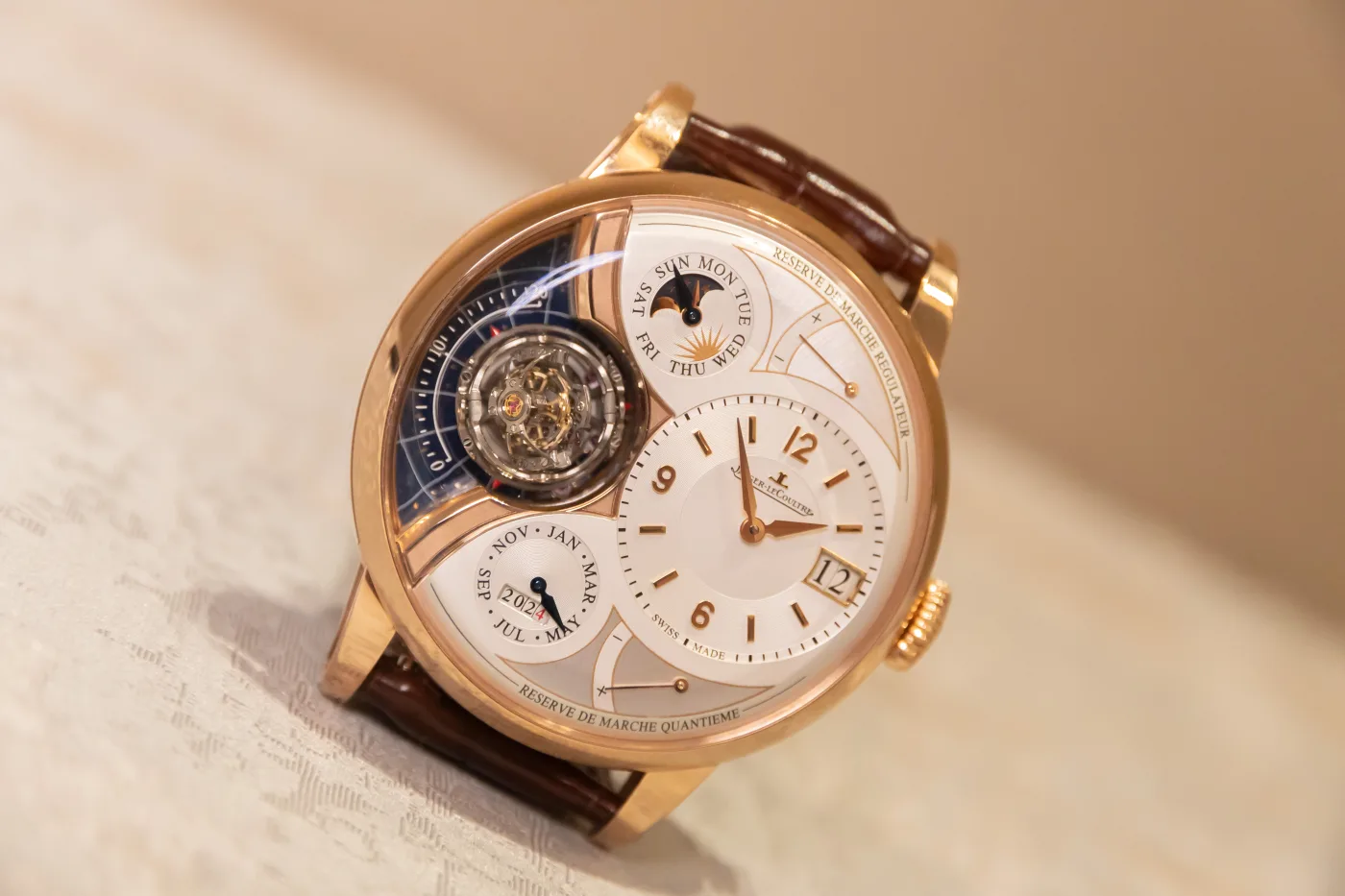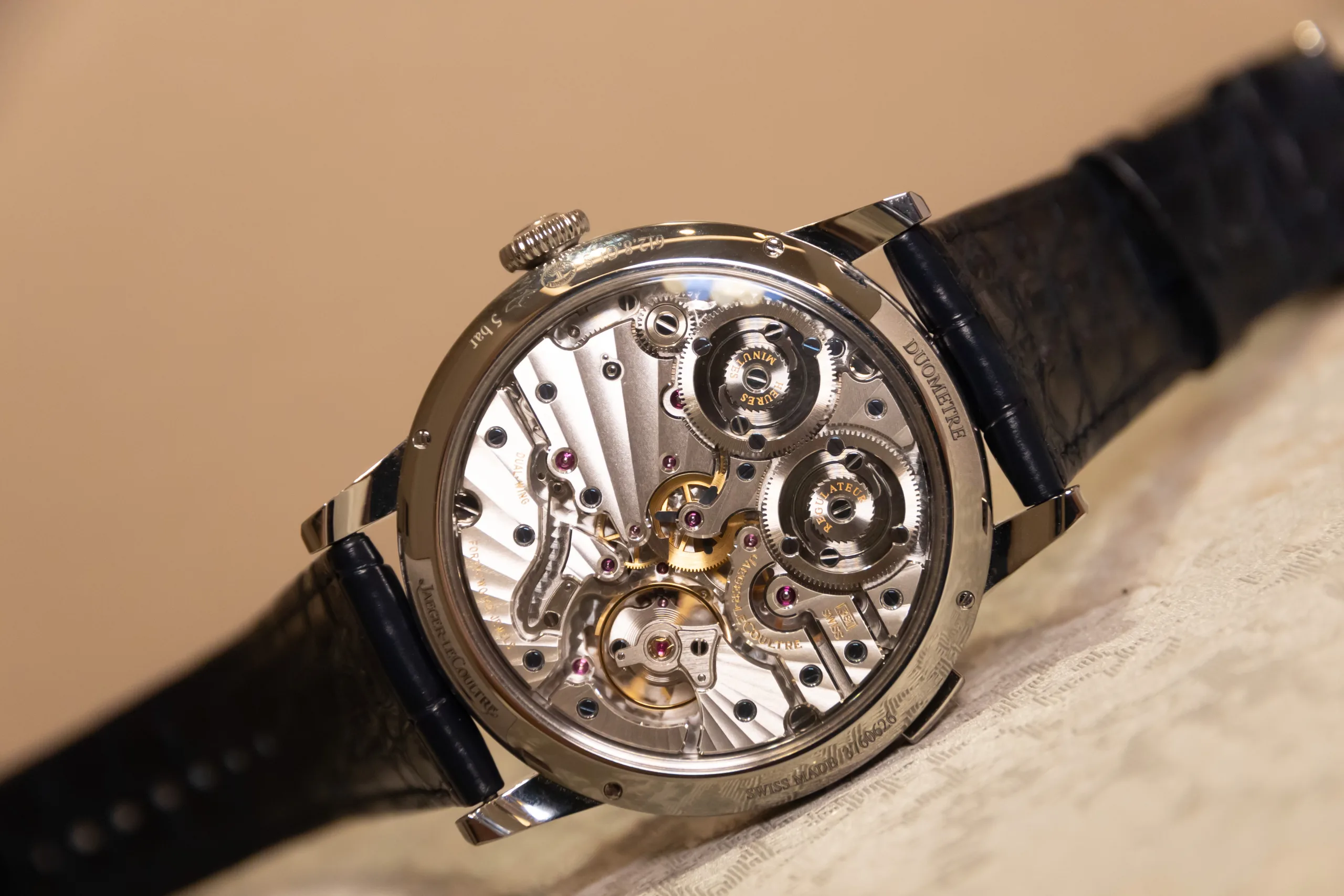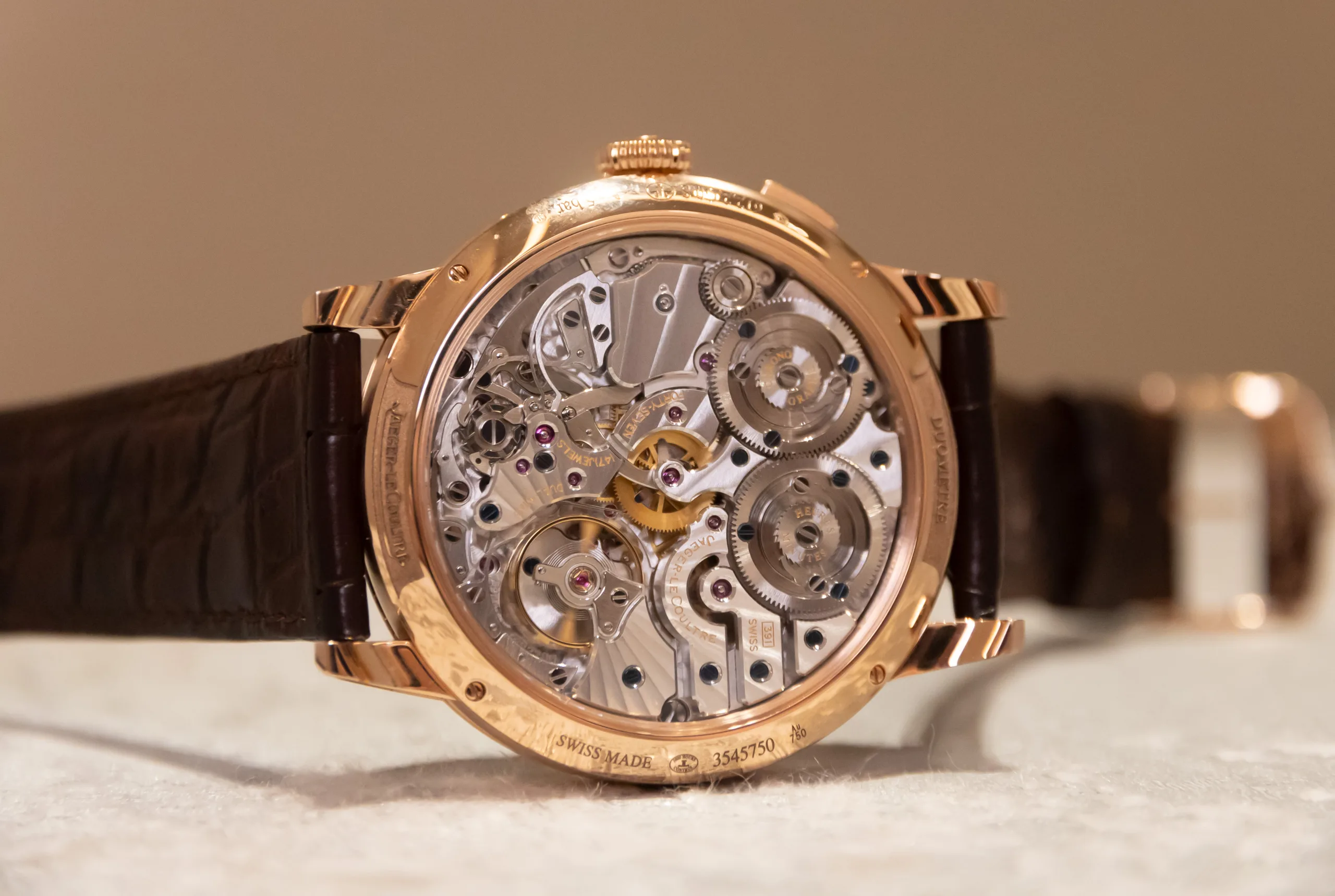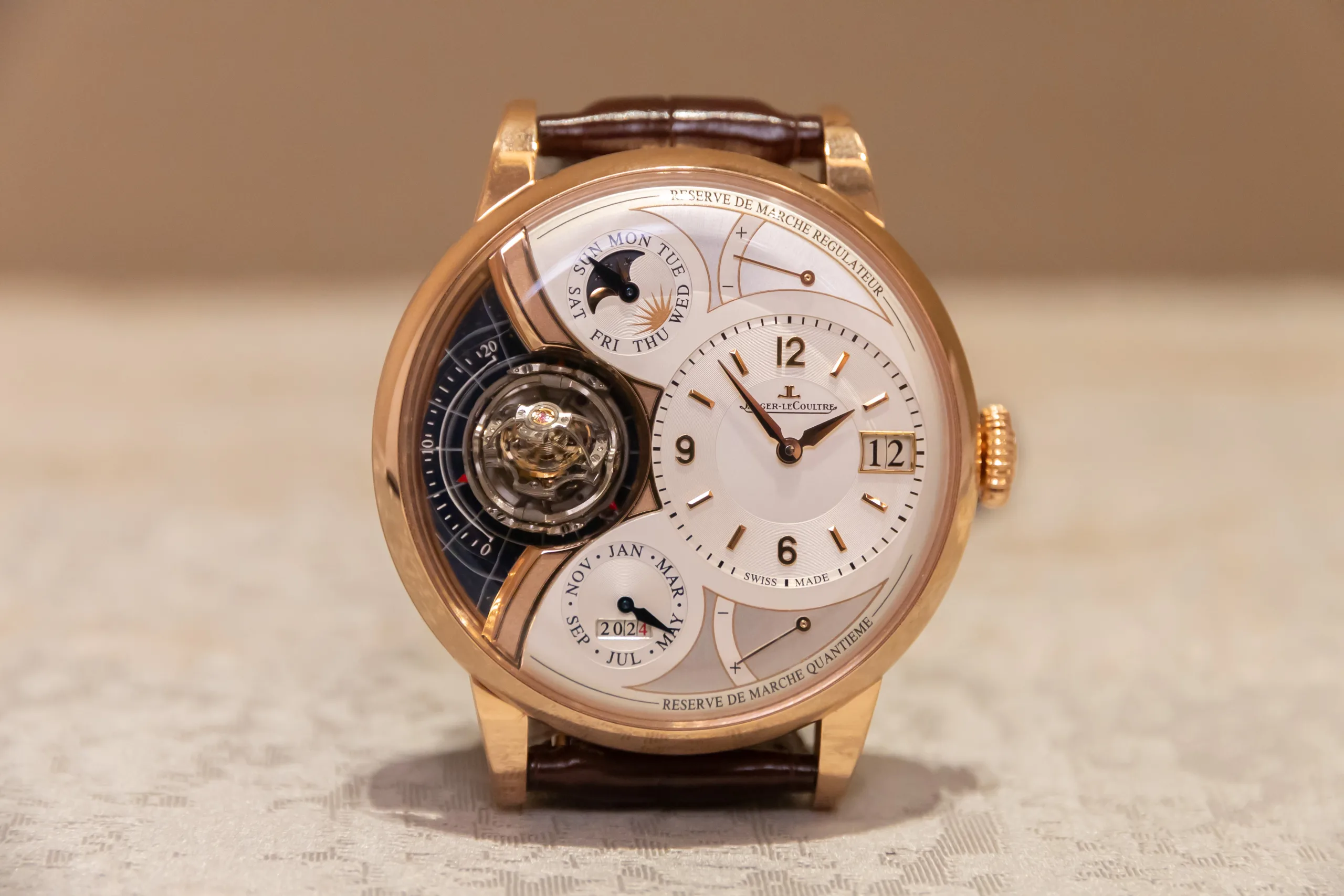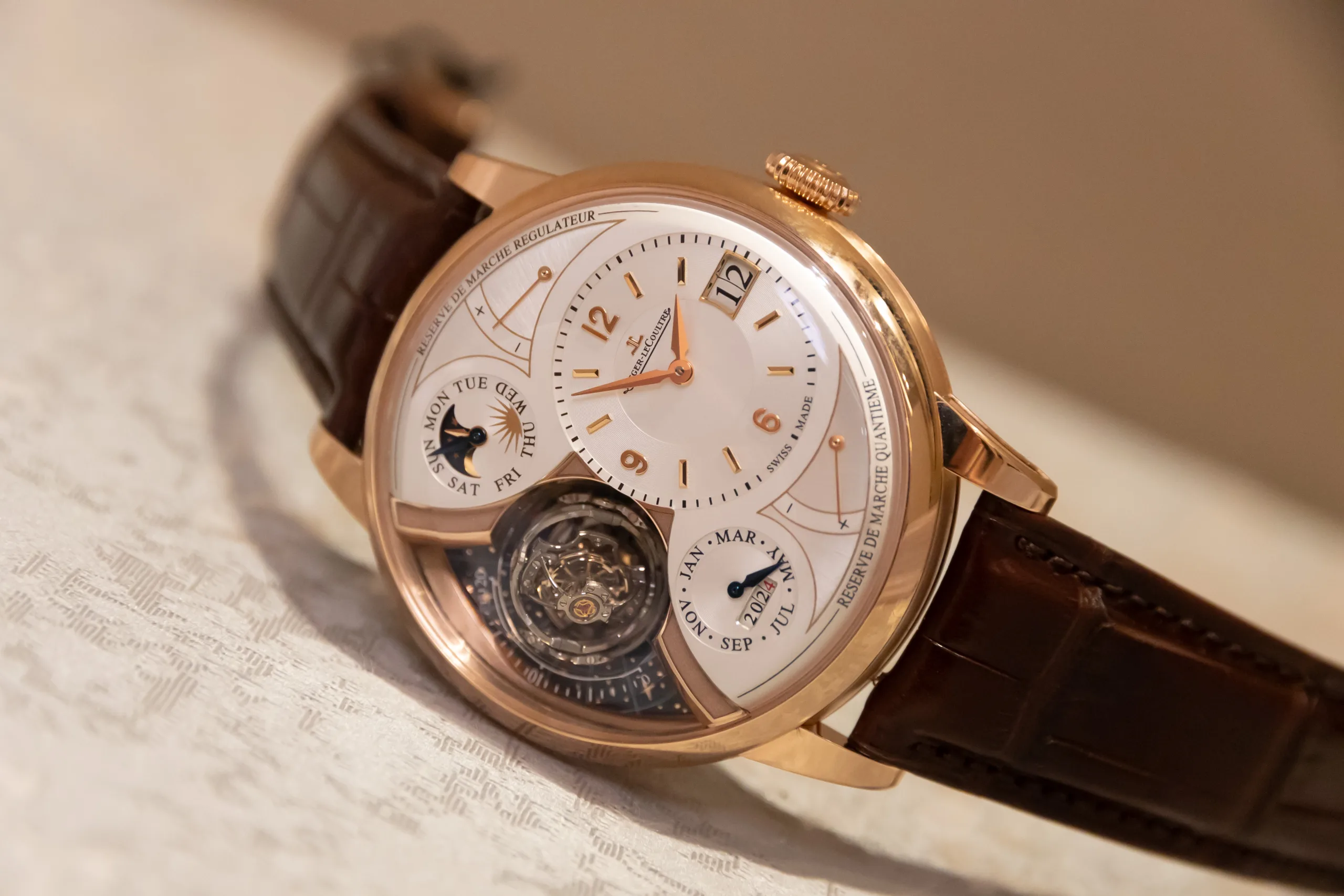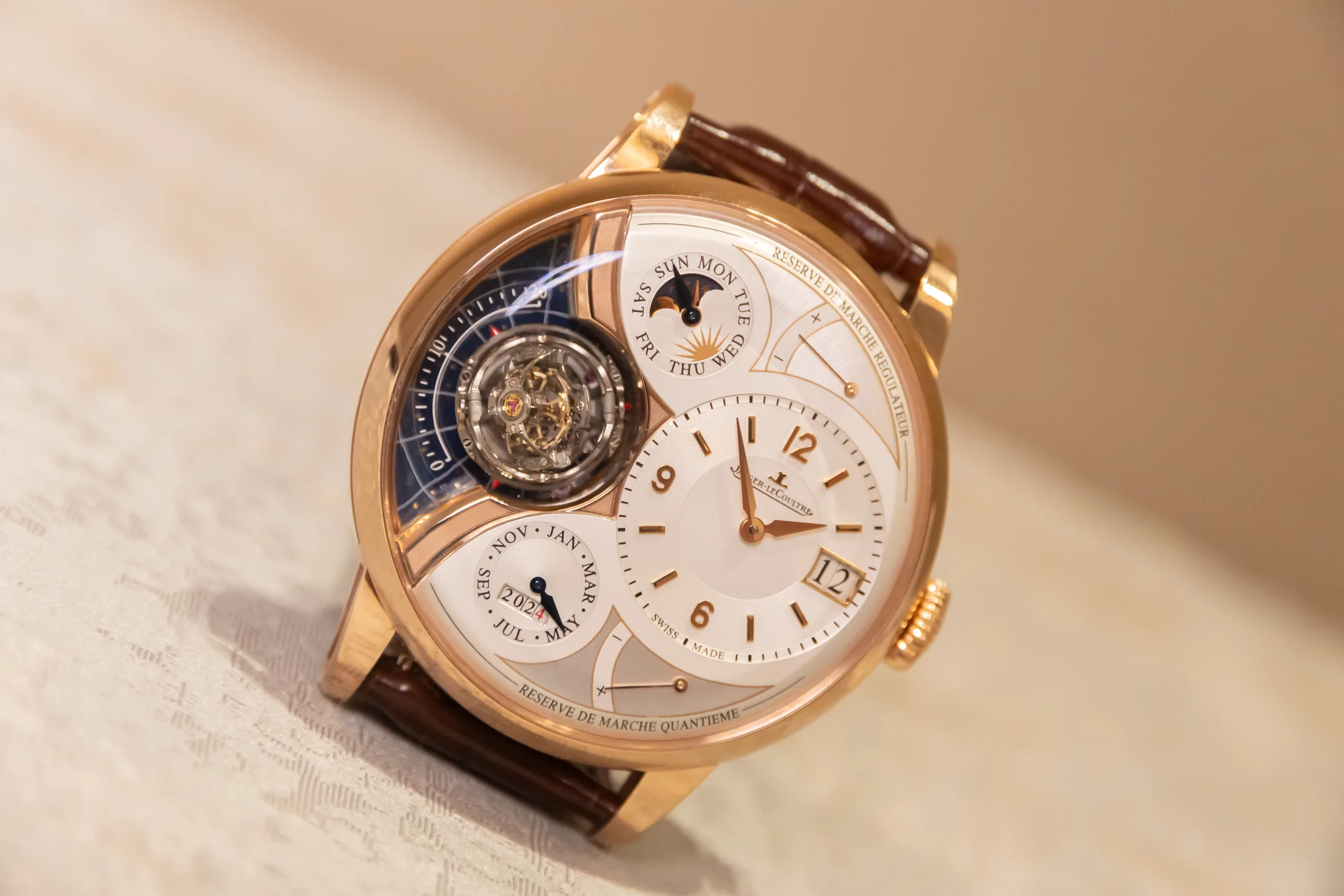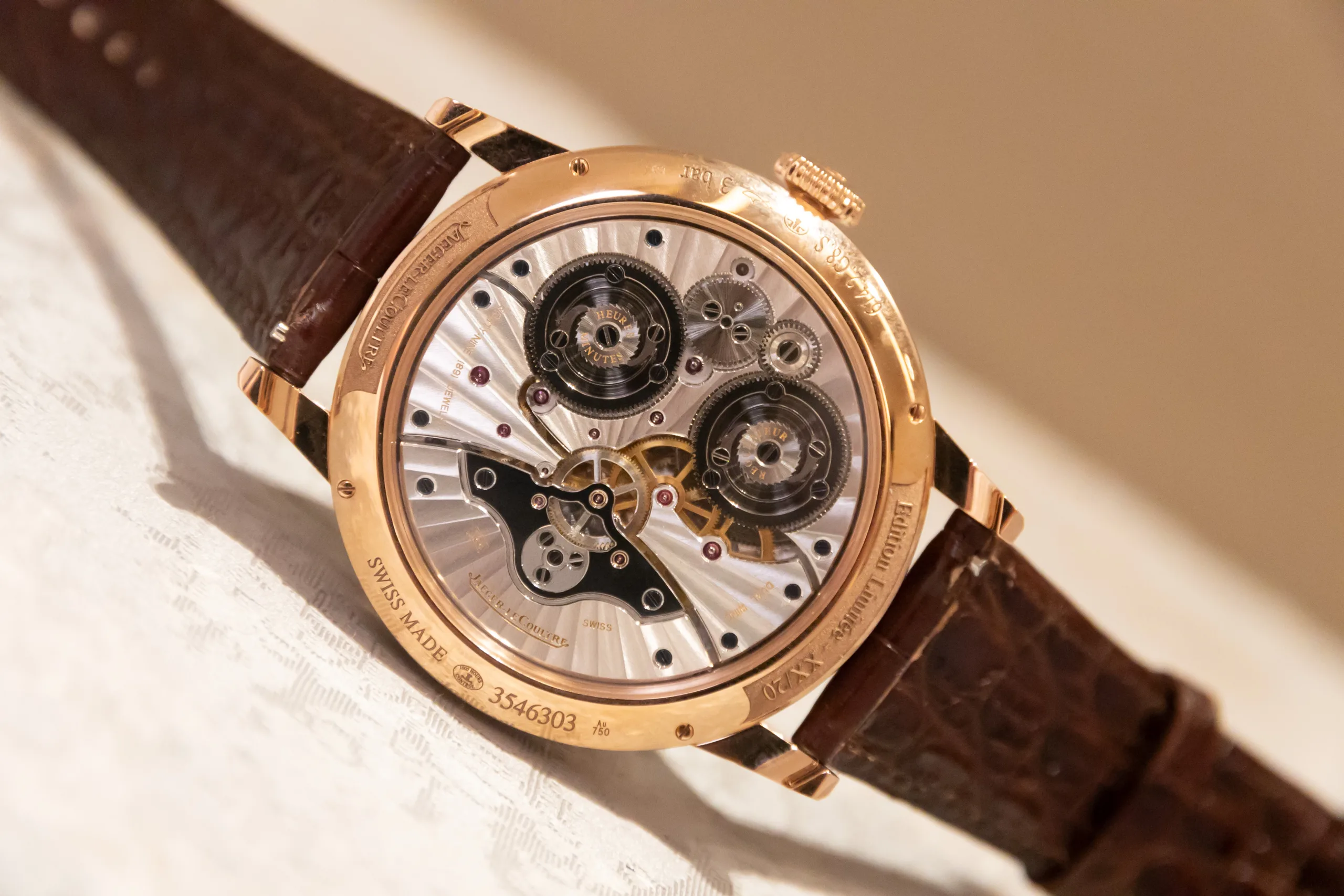BY HARLAN CHAPMAN-GREEN
Jaeger-LeCoultre is known as ‘the watchmaker’s watchmaker’ for a variety of reasons, the most notable being that it supplied movement bases (and whole movements) to some of the industry’s most respected names like Patek Philippe, Vacheron Constantin and Audemars Piguet. While most brands are shifting towards in-house-made movements, Jaeger-LeCoultre has more free time on its hands to develop other crazy things as one of the world’s most respected watchmakers. Today, we’re looking at some of the watches from what I think is their best collection, the Duomètre.
Duomètre Quantième Lunaire
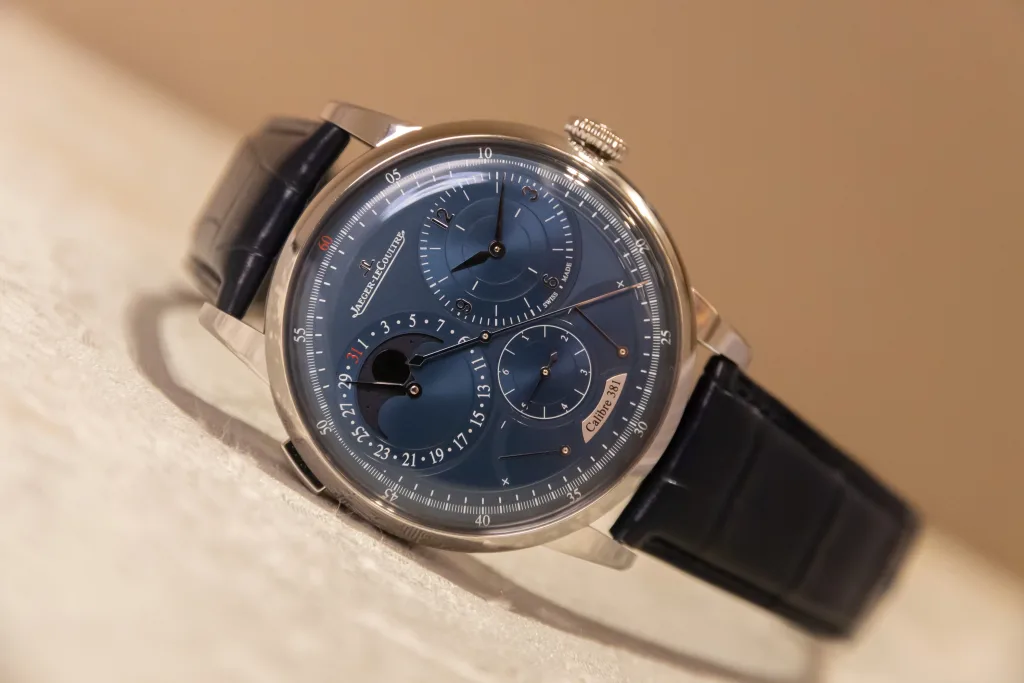
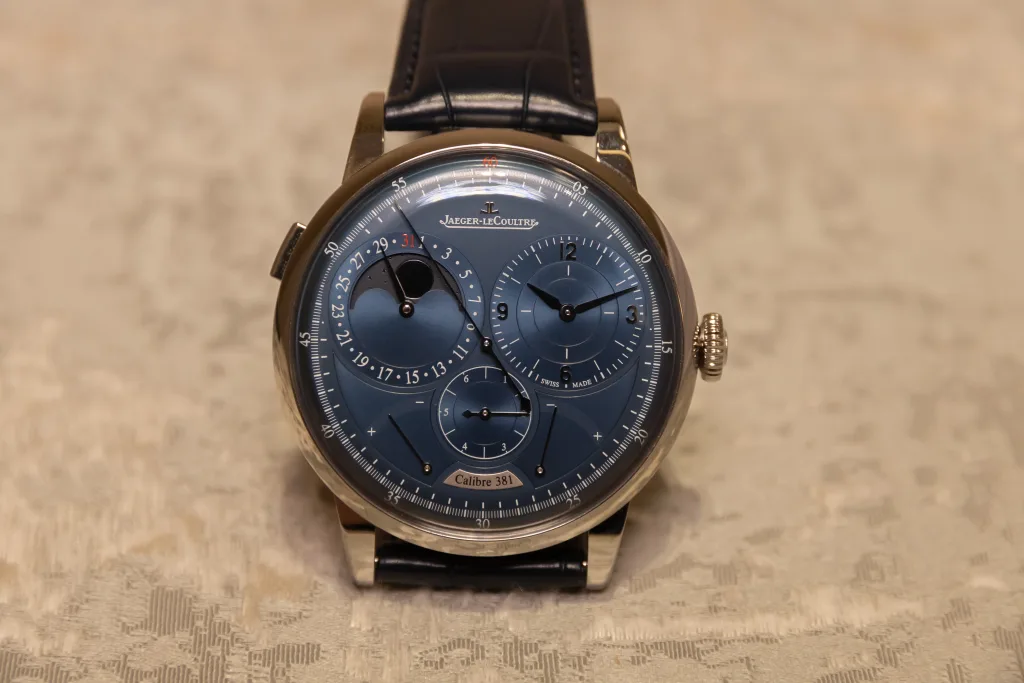
The Quantième Lunaire version of the Duomètre is the most reserved piece in the current lineup. There are no dial cutouts and yet there are still plenty of eccentricities to behold. This watch is the simplest of the three we’re viewing today, but it’s by no means basic. It displays the date in a subdial of its own with a moonphase cut into it, the other dial is the time dial with delicate lancet-style hands. A long and slender seconds hand sweeps over the dial to the edge, and below that at 6 O’clock is a 1/10th of a seconds hand which frantically jumps round and round as the watch ticks. This display is known as a foudroyante or jumping seconds indicator and is a staple of the Duomètre collection.
Behind the elegant blue dial of the Duomètre is the hand-wound calibre 381, a technical marvel. It boasts two barrels, one for the time and one for the extra complications, working in harmony to ensure a smooth power flow and reduce timing errors. The movement beats at 3Hz for a total of 50 hours, and the finishing, especially the sunray finishing, is a sight to behold. The watch is encased in a 42.5mm x 13.05mm stainless steel case, water resistant to 50 m, and presented on a blue leather strap. The price of this model is $44,300 before tax.
Duomètre Chronograph Moon
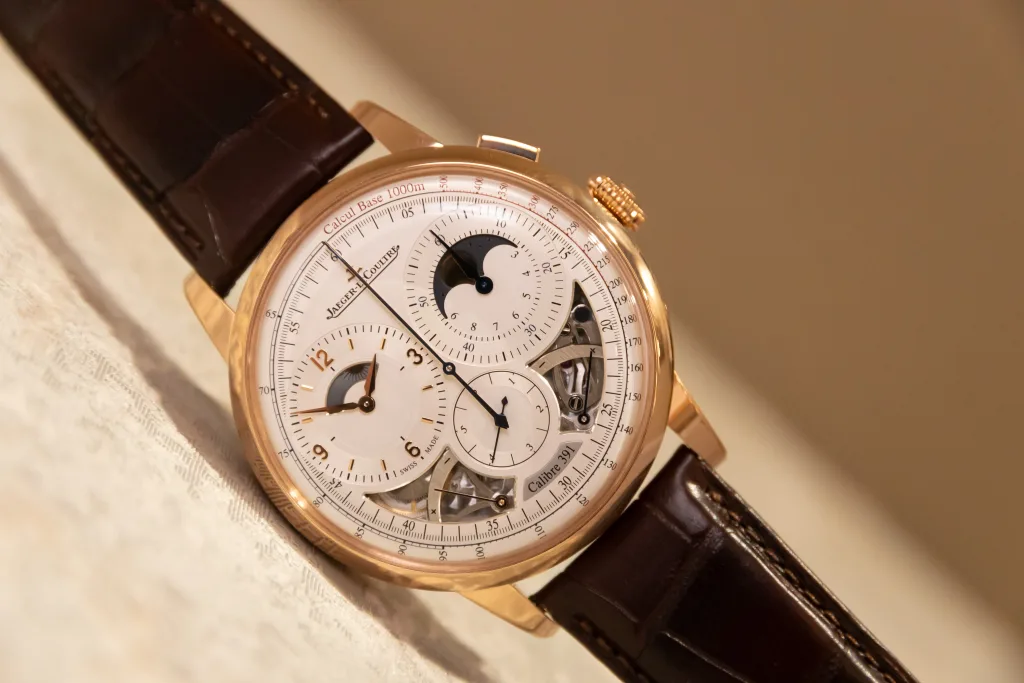
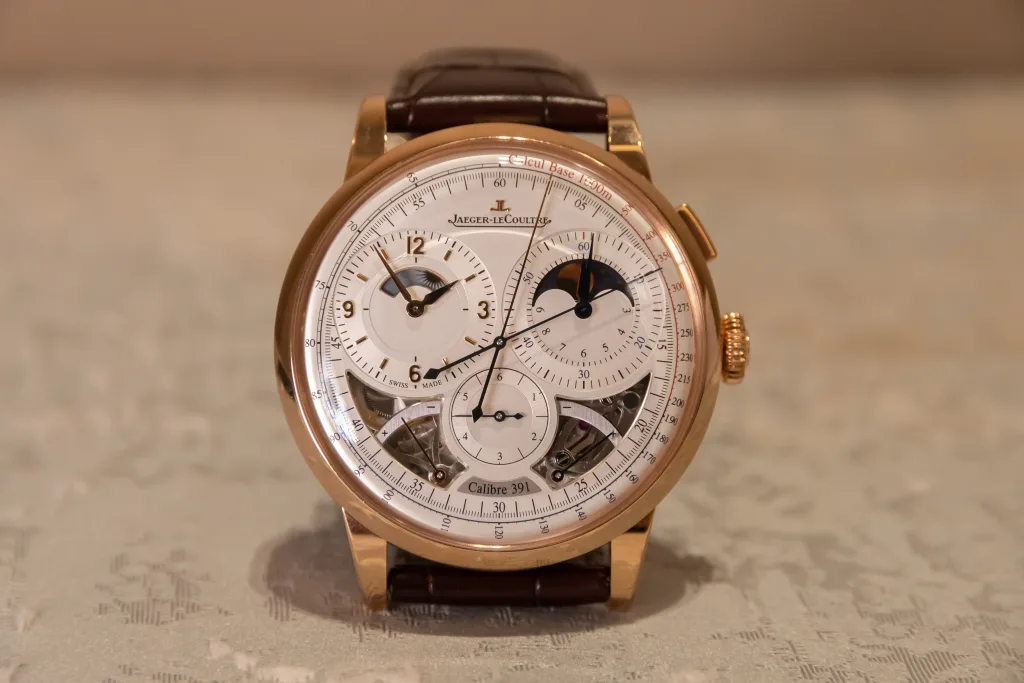
Two versions of this particular model exist, there’s the 18k pink gold model (pictured) and a 950 platinum model with a salmon dial. The 18k pink gold version comes with a silvery opaline dial which makes it very dressy indeed, despite being a contemporary complicated dress watch. On this model, the gold hands are related to the time display, those hands being the hours, minutes, seconds and power reserve indicator for the time barrel. The case’s diameter remains the same at 42.5mm but it’s thicker at 14.2mm.
Meanwhile, the blue hands are connected to the chronograph function which is controlled via the monopusher situated above the crown. When activated, the blued foudroyante hand springs to life, the long seconds hand begins its sweep around the dial and the chronograph minutes and hours hands begin their respective journeys. There is also a tachymeter scale for good measure and a power reserve indicator for the chronograph barrel. This watch also comes with a constantly-running day/night and moonphase indicator. All of this is powered by the superb hand-wound calibre 391 which has a 50-hour power reserve and a 3Hz beat rate. The price for the pink gold model is $70,000 before tax, and the platinum version is $86,000 before tax.
Duomètre Heliotourbillon Perpetual
The final and by far the most complex of all the new Duomètre watches is the Heliotourbillon Perpetual piece, which features an all-new tourbillon design from the brand which is perhaps the most cutting-edge in tourbillon design at the moment. The only watchmaker I can think of currently that’s as innovative with its designs as Jaeger-LeCoultre is Greubel Forsey and they’re virtually impossible to get hold of. As well as the regular tourbillon, Jaeger-LeCoultre also makes the Gyrotourbillon, as well as this one. It also previously made the unique Sphérotourbillon, which I’m sure will make a comeback at some point. That’s a lot of innovation, and I’m sure both John Arnold and Abraham-Louis Breguet would be proud to see the tourbillon still going strong today.
This new piece builds on the principle of using clever designs and cleverer complications to make a watch more accurate (the other way of doing this is by using an incredibly high beat rate). The Duomètre already splits the power reserve between two barrels, as discussed above, one for the calendar and one for the timing, but this one also uses a brand-new tri-axis tourbillon to overcome the effects of gravity on the tiny balance wheel.
The original tourbillon was designed to do this in a pocket watch, which spent nearly all its life upright in the wearer’s pocket. Naturally, as the watch moved from the pocket to the wrist the tourbillon’s function became diminished, although it’s still used as a symbol of prestige and is generally interesting to look at. Jaeger-LeCoultre’s Gyrotourbillon is an improvement on the complication and incorporates two axes, but the new Heliotourbillon rotates the balance wheel on three axes which should completely counteract the effects of gravity regardless of the position the watch is placed in. This is achieved using three cages: one rotates the tourbillon on the traditional axis, then a second rotates that cage on a 90-degree angle, and the third cage rotates the second cage on a further 90-degree angle (i.e. parallel to the first cage). The 163 components of the tourbillon assembly include titanium cages with super-low friction ceramic ball bearings and an in-house-made cylindrical hairspring to reduce timing errors further. It also looks really awesome.
As well as the awesome-looking Heliotourbillon, this watch is also packed with a perpetual calendar featuring a big date window and a year indicator, plus a day/night indicator. Unlike the other models, there isn’t a huge amount to see around the back of the calibre 388 as most of it has to be packed in one side of the case thanks again to the tourbillon. What we do see is very beautiful. It’s just occurred to me that Jaeger-LeCoultre has started using traditional rhodium-plating for its movement in the Duomètre before it used German Silver, just like its Richemont sister brand A. Lange & Söhne, does anyone know when that switch happened? The movement beats at 4Hz for approximately 46 hours and thanks to more clever designing on Jaeger-LeCoultre’s part can be set backwards without risking damaging any components.
All of this is in a beautifully-finished engineering is housed inside a 44mm x 14.7mm 18k pink gold case which has been finished with brushing, polishing and micro-blasting. It’s also shaped to resemble a pocket watch so the case and bezel smoothly dome in the centre, Jaeger-LeCoultre uses the French word savonette which means a small disk of soap with rounded edges. I’d love to tell you how it feels on the wrist, but strangely, we weren’t allowed to try it on; given that other blogs have wrist shots of it, this is a bit frustrating. With that said, press watches at shows like Watches & Wonders Geneva tend to get beaten around a bit, and with only 20 of these super complex watches in production it’s a little understandable they wouldn’t want everyone to knock it around giving it a go. The price of one of these is $438,000 before taxes, making it one of the most expensive pieces at the show and the most expensive piece Jaeger-LeCoultre has released so far this year.

